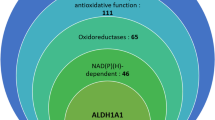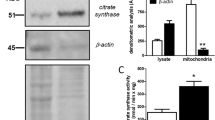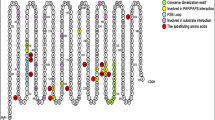Abstract
THE microsomal enzyme epoxide hydratase (EC 4.2.1.63) is potentially important in the inactivation of metabolically produced epoxides which may be responsible for the mutagenic and/or carcinogenic properties of polycyclic hydrocarbons (for reviews see refs 1–3). Reports4,5 suggest that the enzyme plays a dual role in (a) producing proximate carcinogens which, after biotransformation to carcinogens by microsomal mono-oxygenase(s) are (b) inactivated by epoxide hydratase. As this enzyme can be induced6–8, activated9–10 and inhibited9–13 it should be useful in studies of the mechanism of chemical carcinogenesis: some inverse correlations have been reported between susceptibility to carcinogenesis by polycyclic hydrocarbons and inducibility of epoxide hydratase at different stages of development in the rat14. Most investigations of this enzyme6–10,15–18, however, have involved radiometric assay with 3H-styrene oxide as substrate18. There is evidence that the enzyme(s) responsible for the hydration of this substrate are also involved in hydration of epoxides, derived from polycyclic hydrocarbons9,19, while other evidence suggests the presence of several epoxide hydratases in the microsomal membrane7,9,10,19. Thus it was not known whether information about epoxide hydratase obtained with styrene oxide as substrate applied to the enzyme(s) responsible for hydration of epoxides derived from polycyclic hydrocarbons. Using antibodies raised against a homogeneous epoxide hydratase preparation and other criteria described here, we have now found evidence that intact microsomal membranes contain a single enzyme able to hydrate styrene oxide and benz(a)pyrene, 4,5-oxide, a K-region epoxide.
This is a preview of subscription content, access via your institution
Access options
Subscribe to this journal
Receive 51 print issues and online access
$199.00 per year
only $3.90 per issue
Buy this article
- Purchase on Springer Link
- Instant access to full article PDF
Prices may be subject to local taxes which are calculated during checkout
Similar content being viewed by others
References
Daly, J. W., Jerina, D. M., and Witkop, G., Experientia, 28, 1129–1149 (1972).
Oesch, F., Xenobiotica, 3, 305–340 (1973).
Sims, P., and Grover, P. L., Adv. Cancer Res., 20, 165–274 (1974).
Sims, P., Grover, P. L., Swaisland, A., Pal, K., and Hewer, A., Nature, 252, 326–328 (1974).
Booth, J., and Sims, P., FEBS Lett., 47, 30–33 (1974).
Oesch, F., and Daly, J. W., Biochem. biophys. Res. Commun., 46, 1713–1720 (1972).
Oesch, F., Jerina, D. M., Daly, J. W., and Rice, J. M., Chem. Biol. Interactions, 6, 189–202 (1973).
Oesch, F., J. biol. Chem. (in the press).
Oesch, F., Kaubisch, N., Jerina, D. M., and Daly, J. W., Biochemistry, 10, 4858–4866 (1971).
Oesch, F., Biochem. J., 139, 77–88 (1974).
Bürki, K., Stoming, T. A., and Bresnick, E., J. natn. Cancer Inst., 52, 785–788 (1974).
Dansette, P. M., et al., Archs Biochem. Biophys., 164, 511–517 (1974).
Watabe, T., and Yamada, N., Biochem. Pharmac., 24, 1051–1053 (1975).
Oesch, F., FEBS Lett., 53, 205–210 (1975).
Nebert, D. W., Benedict, W. F., Gielen, J. E., Oesch, F., and Daly, J. W., Molec. Pharmac., 8, 374–379 (1972).
Kellermann, G., Luyten-Kellermann, M., and Shaw, C. I., Biochem. biophys. Res. Commun., 52, 712–715 (1973).
Pyerin, W. G., and Hecker, E. T., Krebsforsch., 83, 81–83 (1975).
Oesch, F., Jerina, D. M., and Daly, J., Biochim. Biophys. Acta, 227, 685–691 (1971).
Oesch, F., Jerina, D. M., and Daly, J. W., Archs Biochem. Biophys., 144, 253–261 (1971).
Oesch, F., Bentley, P., and Glatt, H. R., in Active Intermediates: Formation, Toxicity and Inactivation (edit. by Gillette, J. R. et al.) (Plenum, New York, in the press).
Author information
Authors and Affiliations
Rights and permissions
About this article
Cite this article
OESCH, F., BENTLEY, P. Antibodies against homogeneous epoxide hydratase provide evidence for a single enzyme hydrating styrene oxide and benz(a)pyrene 4,5-oxide. Nature 259, 53–55 (1976). https://doi.org/10.1038/259053a0
Received:
Accepted:
Issue Date:
DOI: https://doi.org/10.1038/259053a0
This article is cited by
-
Xenobiotica-metabolizing enzymes in the lung of experimental animals, man and in human lung models
Archives of Toxicology (2019)
-
Xenobiotica-metabolizing enzymes in the skin of rat, mouse, pig, guinea pig, man, and in human skin models
Archives of Toxicology (2018)
-
Xenobiotic-metabolizing enzymes in the skin of rat, mouse, pig, guinea pig, man, and in human skin models
Archives of Toxicology (2014)
-
Epoxide hydrolase activity in the mitochondrial fraction of mouse liver
Nature (1981)
-
On the biochemical mechanism of tumorigenesis in mouse skin
Journal of Cancer Research and Clinical Oncology (1979)
Comments
By submitting a comment you agree to abide by our Terms and Community Guidelines. If you find something abusive or that does not comply with our terms or guidelines please flag it as inappropriate.



